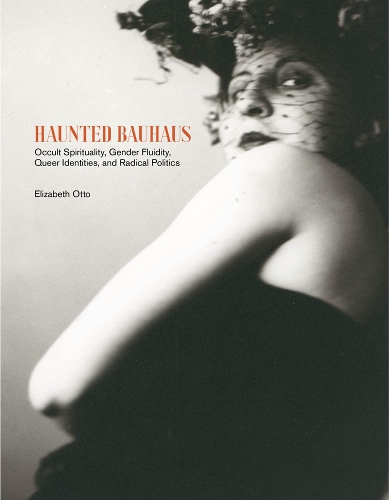
Haunted Bauhaus: Occult Spirituality, Gender Fluidity, Queer Identities, and Radical Politics
(Hardback)
Publishing Details
Haunted Bauhaus: Occult Spirituality, Gender Fluidity, Queer Identities, and Radical Politics
By (Author) Elizabeth Otto
MIT Press Ltd
MIT Press
24th September 2019
United States
Classifications
General
Non Fiction
Spiritualism
History of art
700.455
Physical Properties
Hardback
296
Width 178mm, Height 229mm, Spine 24mm
Description
An investigation of the irrational and the unconventional currents swirling behind the Bauhaus's signature sleek surfaces and austere structures.The Bauhaus (1919-1933) is widely regarded as the twentieth century's most influential art, architecture, and design school, celebrated as the archetypal movement of rational modernism and famous for bringing functional and elegant design to the masses. In Haunted Bauhaus, art historian Elizabeth Otto liberates Bauhaus history, uncovering a movement that is vastly more diverse and paradoxical than previously assumed. Otto traces the surprising trajectories of the school's engagement with occult spirituality, gender fluidity, queer identities, and radical politics. The Bauhaus, she shows us, is haunted by these untold stories. The Bauhaus is most often associated with a handful of famous artists, architects, and designers-notably Paul Klee, Walter Gropius, Laszl Moholy-Nagy, and Marcel Breuer. Otto enlarges this narrow focus by reclaiming the historically marginalized lives and accomplishments of many of the more than 1,200 Bauhaus teachers and students (the so-called Bauh usler), arguing that they are central to our understanding of this movement. Otto reveals Bauhaus members' spiritual experimentation, expressed in double-exposed "spirit photographs" and enacted in breathing exercises and nude gymnastics; their explorations of the dark sides of masculinity and emerging female identities; the "queer hauntology" of certain Bauhaus works; and the role of radical politics on both the left and the right-during the school's Communist period, when some of the Bauh usler put their skills to work for the revolution, and, later, into the service of the Nazis. With Haunted Bauhaus, Otto not only expands our knowledge of a foundational movement of modern art, architecture, and design, she also provides the first sustained investigation of the irrational and the unconventional currents swirling behind the Bauhaus's signature sleek surfaces and austere structures. This is a fresh, wild ride through the Bauhaus you thought you knew.
Reviews
Haunted Bauhaus is as eye-opening as it is door-opening Haunted by utopian aspirations and its own history, the Bauhaus helped remake (and unmake) the world in ways its founders could never have anticipated.
J. Hoberman, ArtforumOtto shows us that the dominant Bauhaus narrative erased valuable stories. One realizes that there cannot be one complete account of the non-compliant lives that passed through its doors. Yet, by tying these hidden and diverse stories together, the book provides a necessary starting point for future investigations into our marginalized pasts.
Paprika! The Yale Architecture NewspaperExample after example, [Elizabeth] Otto expands our view of a legendary institution, finally freeing it from the limiting confines of a tired old narrative. It's about time, she convinces us, to widen and refocus the scope of scholarly inquiry into the Bauhaus in order to truly understand its contemporary significance.
The Brooklyn RailCertainly it is not incorrect to discuss the Bauhaus as a model of rational modernism. Real-estate agents and antique dealers have long adopted the name of the school thus, as a pleasant catchphrase. But Otto pointedly reveals that which almost inevitably must be omitted from such a perspective: the approach of the Weimar- and then Dessau-based design school was more occult, spiritual, queer, and politically radical than can be expressed by the general formula, Bauhaus style.
Frankfurter Allgemeine ZeitungIn Haunted Bauhaus, we come to understand Bauhaus design as more than the machine aesthetic of its celebrated products... Otto's beautifully designed, lucidly written, and well-illustrated book restores the messiness of people, bodies, lives, and passions to the Bauhaus narrative, casting its serene geometries in a new light.
Barbara McCloskey, Journal of Design HistoryAuthor Bio
Elizabeth Otto is an art historian and the author of Tempo, Tempo! The Bauhaus Photomontages of Marianne Brandt, the coauthor of Bauhaus Women- A Global Perspective, and the coeditor of five books including Bauhaus Bodies- Gender, Sexuality, and Body Culture in Modernism's Legendary Art School. She is Associate Professor at the University at Buffalo (SUNY), where she has also served as the Executive Director of the Humanities Institute. Her work has been supported by numerous organizations including the Alexander von Humboldt Foundation, the Center for Advanced Study in the Visual Arts, the National Humanities Center, and the University at Pittsburgh's Humanities Center.
